#repatriation for free
Text


The Ethnic Cleansing of Palestine - Ilan Pappé (2006)
#repatriation#anti repatriation#The Ethnic Cleansing of Palestine#Ilan Pappé#Palestine#Israel#Free Palestine#Free Gaza#ethnic cleansing#zionism#nsnv#colonialism#Nakba#atypicalreads#politics#history#state of israel#ideology#nonfiction#Ilan Pappe#west bank#nakba
4 notes
·
View notes
Text
DECOLONISING D&D

In 2019, after seeing yet another round of alarmist discourse in Xwitter about how Dungeons & Dragons is FULL of COLONIALIST tropes and patterns, and needs to be revised, SCRUBBED of its PROBLEMATIC FILTH---I rage-tweeted this brainfart:
"Decolonising D&D"
I've seen this thread round the community, since. Humza K quotes it in Productive Scab-picking: On Oppressive Themes in Gaming. Prismatic Wasteland quotes it in Apolitical RPGs Don't Exist. Most recently, it was referenced in a 1999AD post about Western TTRPGs (an interesting discussion on its own merit; one that already has a counterpoint from Sandro / Fail Forward.)
If folks are still referring to it five years later, maybe I should give the thread a little more credit? Perhaps the fart miasma has crystalised into something concrete.
In the interest of record / saving this thought from the ephemerality of Xwitter, here is the text in full, properly paragraphed, and somewhat more cleanly expressed:
+++
"DECOLONISING D&D"
Firstly: saying "D&D is colonialist" is similar to saying: "the English language is colonialist".
If your method of decolonising RPGs is to abandon D&D---well, some folks abandon English; they don't want to work in the language of the coloniser. More power to them!
For those who want to continue using the "language" of D&D---
Going forth into the "wild hinterland" (as if this weren't somebody's homeland);
to "seek treasure" (as if this didn't belong to anybody);
and "slay monsters" (monsters to whom?)
Yeah. There's some problematic stuff here, and definitely these aspects should make more people uncomfortable.
But! I think it is an error to "decolonise D&D" by scrubbing such content from the game.
That feels like erasure; like an unwillingness to face history / context; like a way to appease one's own settler guilt.
Do you live in the West? Do you live in any Asian urban metropole? White or Person of Colour(tm)---you are already complicit in colonialist / capitalist (yes, of course they are inextricably linked) behaviour. (I can't speak for urban metropoles elsewhere, but I bet they are similar centres of extraction.)
Removing such patterns from the TTRPGs you play might let you feel better, at your game table. But won't change what you are.
I think it is more truthful and more useful NOT to avert one's eyes from D&D's colonialism.
The fact that going forth into the hinterland to seek treasure and slay monsters is a thing, and fucking fun, tells us valuable things about the shape and psychology of colonialism. Why conquistadors in the past did it; why liberal foreign policy, corporations, and post-colonial societies do it today.
Speaking personally:
I write stuff that evokes / deals with the context I'm in---Southeast Asia. An intrinsic part of that is looking at the ways colonial violence has happened to us---as well as the ways / reasons we now, supposedly free, perpetrate it on others.
A long chain of suffering. Heavy stuff.
I also write for people who want to have fun / kill monsters / pretend to be elves, of course. But for those people who want to consider serious stuff like colonialism: I offer no FIGHT THE POWER righteousness, no good feeling, no answers.
Only discomfort. Because the truth is uncomfortable.
Here's a screenshot of the Author's Note for Lorn Song of the Bachelor:

"Any text inspired by Southeast Asia has to reckon with colonialism ... This text presents a difficult situation; there are no easy solutions.
"... If I offered a mechanical incentive for you to fight colonial invaders, you wouldn’t be making a moral decision, but a mercenary one.
"The choice you face should echo ... the kind of calculus my grandparents faced."
I stand by that.
Also: might we be more precise and more careful about using the term "decolonising", please?
Here I quote Tuck and Yang's landmark and (sadly) still trenchant "Decolonization is not a metaphor":
"Decolonization brings about the repatriation of Indigenous land and life; it is not a metaphor for other things we want to do to improve our societies ..."
+++
Further Reading
So this post isn't just me reheating a hot take, here are some touchstone writings from around the TTRPG community about colonialism as a subject and mode of play in games:
+
"Jim Corbett was called upon to hunt down another fifty maneaters over the course of the next 35 years. Together, those tigers had killed over 2000 people, for much the same reasons as the Champawat Tiger - injury, desperation, starvation, and habitat loss.
Would you look at that.
The root cause was British colonialism."
D&D Doesn't Understand What Monsters Are
from Throne of Salt
+
"Another effect of having colonizers in my setting would be giving players the opportunity to drive them away from the islands, their home. This maybe just be for the catharsis. After all, isn’t catharsis a big part of why we play roleplaying games?"
I’m Adding Colonizers To My Setting
from Goobernut's Blog
+
"When you have a slime boy and the other characters are a really fat lizard and one's playing Humpty Dumpty, it completely shatters the straight-faced serious authoritarian illusion of race, and replaces it with complete fucking nonsense. I love the idea of proliferating the number and types of "races" into absurdity, to the point where the entire logical structure of it collapses in on itself and race as a category ceases to become coherent or meaningful in any sense."
Interview with Ava Islam - Designer of the RPG Errant
from Ava Islam / The Lost Bay
+
"Perhaps most critically, the fundamental basis of power is not land or even money but manpower. That’s what local rulers fight over, and what Chinese commercial networks export, in return for unique island products. It’s what the European colonists really need (even if it’s not what they most desire). There is rich loot to be grabbed in the form of spices, Spanish silver, Indian gold, sea cucumbers (the Chinese love ’em), perfumes, dyes, cloth etc. so there’s ample opportunity for piracy, trade and smuggling, but the key to long-term success – the key to independent survival – is nakedly and unquestionably uniting people."
Counter-colonial Heistcrawl: previous high scores
from Richard's Dystopian Pokeverse
+
"They worked their own land—which they dispossessed from American Indians—or became small shop owners or opportunistic gold diggers or bounty hunters or itinerant ranchers. To me, substituting these situations for one ruled by industrial monopoly ignores that the Wild West is a perfect example of how capitalism operates outside of (or prior to) mass industry, instead being composed of self-employers and self-sustainers."
Fantastic Detours - Frontier Scum
from Traverse Fantasy / Bones of Contention
+
"... using the Western framing and D&D's baked-in imperialist and capitalist structure to get people earnestly participating in the experience of forming imperial power structures and the early roots of regional capitalism ... The PCs aren't the drifters on the train or the townsfolk watching with apprehension - they're the railroad itself."
An Arrow for the General: Confronting D&D-as-Western in the Kalahari
from A Most Majestic Fly Whisk
+++
795 notes
·
View notes
Text

#Benefits of Business Formation in Free zones#•#100% Expatriate Ownership & Profit Repatriation#No personal Income Tax#For More Detail Contact Us#For further assistance you may call us on +971 52 348 4262#+971 50 202 8198#+971 50 304 5253 or visit website https://www.acuvat.com/. You can mail us on [email protected] or visit Acuvat Auditing#1607#Metropolis Tower#Business Bay#P.O BOX 385183#Dubai#U.A.E
0 notes
Text
Get ready for more ghoul kit headcannon (feel free to share your own. I adore them)
Water ghoul kits squeak like crocodiles
Earth ghoul kits are quiet, they don't usually make sound but a few bleat like a lamb or a deer.
Fire ghoul kits make grunting noises.
Air ghoul kits chirp and whistle.
And Quintessence ghouls mimic the noises other kits make or they don't make noise at all.
Water ghoul kits make the most noise because they're not used to being heard underwater so they don't know when to be quiet. One of the many reasons why they're separated from other kits in the repatriation program.
Just imagine walking into the aquatic nursery and hear
"Squeak squeak sqeak squeak squeak squeak" as all of the water kits just watch you. They also make frog noises if they sleep close to the surface of their aquariums (they sleep in aquariums because kits are more prone to drying out and getting sick than adults.)
Most ghoul kits are fine with whatever element their caretakers are in the Repatriation Program. Water kits, however, need water ghoul caretakers or a multi ghoul with a water ghoul trait for the same reason why they are separated and in aquariums. They will dry out when being handled and in a pouch, especially when in a pouch.
Quintessence ghouls have the potential to handle them without drying them out, but even then they have to take precautions.
Fire ghoul kits aren't as hot as the adults, as in they're lukewarm, so they can be handled comfortably... until they're fussy. They burn hot when they get fussy and have to be handled with oven mitts by non fire ghouls.
Earth kits are often times the biggest out of all the elements, but sometimes that isn't the case. Pebble was always small, even as a kit.
The cuddliest kits are the air and Quintessence kits. That's just how they're brought up. Air kits are used to roosting with nest mates. Quintessence kits are raised communally, they take the saying "it takes a village to raise a child" very literally.
Fire kits aren't the temperamental ones, it's the air kits. Air kits are territorial over things, it's just their nature. They mostly grow out of it.
#the band ghost#nameless ghouls#ghost#ghost band#ghost bc#headcanon#ghoul kits#ghoul repatriation program#water ghoul kits#fire ghoul kits#air ghoul kits#earth ghoul kits#quintessence ghoul kits
294 notes
·
View notes
Text
With all the stuff about the Titanic submarine I keep thinking about the tourism of sites of mass tragedy and human remains. It’s a really important conversation that I haven’t seen many people discuss outside of historical and final care provider circles.
The Titanic is a grave. The only reason that submarines are even permitted to go through it is because it’s in international waters. Other shipwrecks, like in Lake Superior, are frequently declared grave sites and have restrictions or bans on exploration of their structure. At the very least, there should be incredibly strict restrictions on Titanic exploration. It should not be a tourist destination. There may be still be human remains in certain parts of the ship, and the mud around the ship is filled with corpses. Considering the tragedy only happened 100 years ago, this tourism is very disrespectful. Also, exploration of the Titanic could potentially damage the structure, which would hinder academic research as well as further disrespect the dead and those who remember them. The structure will not be around for much longer.
Tourism of sites of mass tragedy can also be very dangerous. Obviously we know why the Titanic is dangerous, but it goes beyond that. Oftentimes people are not aware of the danger, or are reassured by authority that it is safe. For instance, many people visit active volcanoes, and some have been injured or killed by eruptions. For some, the danger is a feature. There are people who visit Chernobyl, an even more recent site of mass tragedy than the Titanic, despite being aware of the danger of radiation. It’s thrill-seeking, but instead of a rollercoaster people are putting themselves in danger to walk through human remains.
Our natural fascination with mortality leads many to disrespect the dead. The viewing of human remains in museums is a big debate, and I personally don’t think that we should display human remains without previous consent from the person. Imagine how you would feel if yourself or a loved one was displayed in a museum, or had your resting place constantly disturbed by tourists.
It’s also important to note that this type of tourism disproportionately impacts people of colour. Eurocentric society systematically dehumanizes the bodies of POC, and this becomes crystal clear in how we treat their remains. Egyptian mummies remain on display in museums despite the disapproval of many Egyptian people. Many black bodies, particularly of women, have been displayed in museums, such as Saartjie Baartman who was finally buried in 2002. Indigenous human remains are also frequently displayed, and ancient burial sites are viewed as cursed land and get destroyed by construction. The remains of people across Asia have been sold and displayed, with recent displays posing the human remains of Chinese prisoners. Most human bones being sold originated from graverobbing the graves of Asian and Indigenous people. None of these people consented to this treatment, and these communities are still being harmed by the commodification of their dead.
Engaging with sites of mass death needs to be done respectfully. The dead deserve our care.
It’s natural to be curious about tragedy and death, and engaging with our own mortality can be healthy. There are ways to engage with these topics respectfully. Many online resources are available to learn about death, with my personal recommendation being the youtube channel Ask a Mortician. Visiting cemeteries is another great way to engage with death, so long as you abide by the rules and have good intentions. There are some great documentaries about instances of mass death, with many available for free on youtube. You can visit designated memorials of the sites. The Titanic itself has a section in a graveyard in Halifax. I also recommend donating to and supporting the efforts of communities to have their human remains and cultural artifacts repatriated.
Sites of mass death need to be treated with the same respect as cemeteries. They are important and full of education, but we need to remember that these are real people. The dead are not fantastical oddities; they are us.
245 notes
·
View notes
Note
Choosing you as the most likely to give a honest and detailed answer. Feel free to delete, however.
When people are calling Israel a colony, what do they mean? The way I understand that word, a colony is land, controlled by some other country that's elsewhere and run by citizens of that country. That doesn't seem to be the case here, since most Israel citizens are only citizens of Israel, not something else, and there's no "main" country they're representing and can return to. Or are people using "colony" metaphorically here?
Before Tumblr mobs me - I don't like Israel and don't support it.
Israel began as a British colony of Palestine in the post WW1 era, around 1920. The people responsible for the genocide are almost entirely of European origin who were moved to Palestine after WW2 (in the 1940s and 1950s) to avoid returning to the homelands where they'd been given up to the nazis by their neighbors.
Today, however, the bulk of the colonization effort is managed by the US military industrial complex.
Now, there are many other people living in Israel, of many faiths and many ethnicities. The Israeli people, be they Jews or otherwise, are also not fans of the genocide, in much the same way the American people are not fans of US genocides.
But the israeli government exists almost entirely as a puppet for US and European colonial goals, and has done since the assassination of Prime Minister Rabin in the 90s.
Prior to that, there was a brief period wherein the rightfully elected leaders of Israel sought peace in the region after throwing off the shackles of British colonialism, which again founded the country and only "ended" (on paper) in the 1950s.
Israel has been a colonial effort for about 2/3s of the century it has existed, including today.
Now, this is a simplified explanation, of course. For example, although it was was a colonial effort, the "return" of Jews to their "homeland" was also a refugee effort, and a repatriation effort.
Jews never really "stopped" being indigenous to the levant even in diaspora. This is extremely obvious if you've ever lived in a Jewish neighborhood, but may come as a shock to a lot of people used to thinking of the assimilated mask Jews wear in Christian societies as our "true" selves.
My family were nondiasporic Jews until me, which I gather is an... unusual perspective that many people don't see often. You'll have to take me at my word, I think, because it's difficult to explain. But Jews never actually "became white" the way people so desperately want to believe. Some jews learned to pass for white, yes, but that isn't the same thing.
Jews, even the Ashkenazim (the "white european" ones) have a right to return home the same as anyone. And not just because I'm a fan of open borders.
But here's the deal.
Mizrahim (Jews who remained in the middle east rather than living in diaspora) are literally treated as inferior, as "arabs" (a colonial term) regardless of religion or ethnicity. To be a Jew is not enough. You have to be the right kind. This is true of other Jews of Colour in Israel as well, often to an even greater extreme, as any Ethiopian Jew in Israel damned well knows.
This also... well, I've talked about it a bit before, but this summary is also casting a very cruel light on the concept of Jewish citizenship being automatically granted in the case of Jewish descent. Which isn't fair of me at all.
In a world without all the goddamned genocide, having a reduced immigration process for the children of emigrants is perfectly fucking common and normal and many countries do it, including the US.
And this also doesn't touch upon the critical political reality that Israel exists as a place for bigots to throw their jews away instead of straight up killing us.
So, okay, this got away from me.
Basically, Israel as a state is a colony of the US (today) and UK (historic), which is armed almost entirely by the US, and which attacks targets the US deems "of interest." The fact that the colony is populated by repatriated indigenous peoples doesn't really change that.
If anything, it deepens the horror, because many of the Jews involved in the genocide against Palestine genuinely (and fairly) believe that this is the last place on earth where a Jewish person can reasonably expect religious safety. Genuinely, and fairly, believe that it's a choice between "the genocide of all Jews globally or the elimination of a single '''Arab''' city."
They're wrong, but not irrational.
In a way, the existence of global antisemitism is the justification that fuels the ongoing palestinian genocide.
Though in practical terms, it is "fueled" by US weapons. The US wants to own Israel and use it as a launching off point for US violence in the region, without the US having to take the blame.
"See? It's all just poor, innocent Israel defending itself*!"
*(entirely with US weapons and often on US orders, often with weapons given to Israel rather than purchased, solely to further destabilize a religiously and financially significant region and furthermore to instill a sense of fear of Israel's neighbors and gratitude to the US)
For another example of a colony-of-the-repatriated, you can check out the history of civil war in Liberia, after the US just dumped a bunch of freed slaves there instead of killing them. Unsurprisingly, it went fucking Badly. However, because Liberia was not considered a "valuable" colony, less study tends to be done into the complexities of that.
Or, I mean, there's always "the life history of Osama Bin Laden" which is kind of like a one man speedrun of what the US is doing with all of Israel.
Support: Patreon - Paypal - Venmo - Ko-Fi - CashApp
137 notes
·
View notes
Note
'ohh if i was a horny mech pilot and you disabled my mech would you abuse me' no i would treat you as a prisoner according to the laws of war. i would not cut your sexy bodysuit off because it is a crime to strip a POW of their clothing and personal effects other than explicit combat equipment. i would not hurt you with my big boot & would instead render medical aid unto you. i would carry out political education to you and set you free as soon as possible according to the strategic and logistical situation
in this house we follow the geneva conventions, damnit. "ohhh would you torture me with a shock collar to get information out of me" no! torture is a grave violation of the laws of war and human rights. you will be detained for the duration of the conflict and then repatriated back to your mother country with all the civil capacity enjoyed at your time of capture and you'll like it.
of course this is all complicated by the fact that mech jockeys are, through a complex series of legal shenanigans, part-owned by corporations and so classified as third-party irregular combatants that don't enjoy the protections of the laws of war
71 notes
·
View notes
Text
Like persons of the Palestinian diaspora, and some in the Jewish community, I am a descendant of a displaced people (namely West Africans forcibly removed, brutalized, and enslaved). I understand desires to correct or minimize historical wrongs and return to a homeland. The founding and colonization of Liberia by African Americans in the 1820s was one attempt to correct the tragedy of American slavery. Viewing Africa as the “Promised Land,” African Americans, sponsored by the American Colonization Society, repatriated in West Africa. African Americans did this despite the fact that the region was already inhabited and settled by ethnic groups that had been there for centuries.
Though empathizing with African Americans fleeing American racism, I must not forget that these settlers (now called Americo-Liberians) colonized and seized the lands of pre-existing West African populations. I admit this while recognizing that my beloved hometown of Petersburg, Virginia, and its historically large free Black population sent many Black settlers to Liberia (including Joseph Jenkins Roberts, the first president!). While ensuring that the histories of Blacks from my hometown are not forgotten, I must also remember that Indigenous Liberians were forced to suffer for the sins of the Trans-Atlantic Slave Trade.
I sympathize with the need of Jewish people (particularly Holocaust survivors) to have a sanctuary from the inhumanity of Nazi Germany, the horrifying legacy of European pogroms and massacres, and other forms of antisemitic racism. As I recall the horrors of the Holocaust, I will not forget how Palestinians are continually forced to suffer for the sins of the Nazi Holocaust against European Jews. [x]
personal essay on solidarity with palestine by lory j. dance, published in mondoweiss on october 25, 2023
56 notes
·
View notes
Text
Hermann Goring
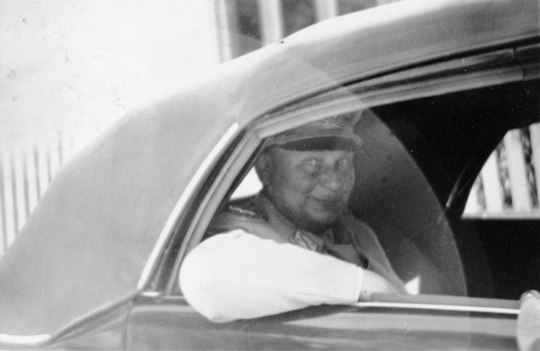
This is Hermann Goring, the Reich minister for Aviation, timeline:
1893: He was born in Rosenheim, 12 January.
1895: Albert, his younger brother, was born.
1904: He was sent to boarding school, where the food was poor and the discipline was harsh.
1909: He was sent to a military academy at Berlin Lichterfelde, from which he graduated with distinction.
1912: He joined the Prince Wilhelm Regiment (112th Infantry) of the Prussian army in 1912.
1913: His father died.
1913: He was admitted to officers' school.
1914: The First World War began.
1914: He served with his infantry regiment in the region of Mülhausen, a garrison town just a mile from the French border.
1915: He passed to the newly formed Luftstreitkräfte, the air force of the German Empire.
1915: He and his friend Loerzer were assigned as a team to FFA 25 in the Crown Prince's Fifth Army. They flew reconnaissance and bombing missions.
1915: He received the Iron Cross first class.
1918: When Manfred Von Richthofen, the legendary Red Baron, died Goring succeeded him as his successor.
1918: Highly decorated, he was also awarded the medal for valor Pour le Mérite, the highest German military decoration at the time.
1918: The First World War ended.
1920: He met his first wife, Carin von Kantzow.
1922: Göring went to Munich to study political science at university.
1922: He met Hitler and he joined the Nazi Party.
1923: He was given command of the Sturmabteilung (SA) as Oberster SA-Führer
1923: He married Carin.
1923: He take part in the failed Munich Putsch, and he was wounded in the groin.
1924: He and his wife visited Rome, passing through Florence and Siena. Göring met Mussolini.
1927: Thanks to a general amnesty, he and his wife were able to repatriate.
1928: He was elected deputy to the Reichstag.
1931: His wife died.
1931: He was sent on a mission to the Vatican, where he met Pope Pius XI.
1932: He was elected president of the Reichstag and from that position supported Hitler's bid for chancellor.
1933: He was one of the main actors in the Reichstag fire, used by the Nazis to eliminate any opposition.
1933: He was appointed Minister-President of the Free State of Prussia.
1933: He created the Gestapo.
1933: Adolf Hitler was appointed Reich Chancellor.
1933: He was appointed minister for aviation.
1933: He was appointed General der Infanterie by President von Hindenburg.
1933: He built his home called Carinhall in honor of his first wife.
1934: He granted control of the Gestapo to the SS.
1934: He was one of the main instigators of the Night of the Long Knives together with Himmler.
1934: He was appointed Reich Minister for Forestry.
1935: He married his second wife Emmy Sonnemann.
1935: He founded the Luftwaffe.
1936: He was appointed Reich Plenipotentiary for the Four-Year Plan.
1936: He also became responsible for the plan to confiscate the assets of German Jews, which was supposed to finance the rearmament of Germany.
1938: His only child, Edda, was born.
1938: With the help of Himmler's Gestapo, he plotted first against von Blomberg and then with his successor, von Fritsch, causing them both to fall
1938: He played an important role in the Anschluss, the union between the Third Reich and Austria.
1939: He created the Reich Central Office for Jewish Emigration in Berlin, with the task of promoting the departure of Jews from all German territories, and placed it under the direction of Heydrich.
1939: Hitler designates him as his successor.
1939: The Second World War began.
1940: Göring was given a renewed mandate to direct the "Four Year Plan" for the next four years, which made him responsible for the war economy.
1940: By a decree on 19 July , Hitler promoted Göring to the rank of Reichsmarschall des Grossdeutschen Reiches (Reich Marshal of the Greater German Reich), a special rank which made him senior to all other army and Luftwaffe field marshals.
1940: He gave directives for the plunder of the occupied territories, mainly France.
1941: It was Göring who gave, on Hitler's behalf, the order to prepare a "final solution to the Jewish problem" to Reinhard Heydrich.
1945: He was arrested by the Allies.
1946: He was tried at the Nuremberg trials.
1946: He committed suicide to avoid execution.
Sources:
Wikipedia: Hermann Goring
Military Wiki: Hermann Goring
❗❗I DON'T SUPPORT NAZISM, FASCISM OR ZIONISM IN ANY WAY, THIS IS AN EDUCATIONAL POST❗❗
41 notes
·
View notes
Note
Ok. Since the Smithsonian (SI) is going up against the EPA this round I suppose I should give it some propaganda: (I am biased)
You may know SI for the 15+ *free* museums (and a zoo) plus the massive *free* online collections and education content, BUT SI is also the second largest research organization in the U.S. (only just below the US military) studying literally anything you could think of.
Space? Art? Environment? Social Justice? Repatriations? Smithsonian’s doing something right now with it. Wanna fund teachers? I’m working on a NSF funded grant for the summer. Interested in the environment? We’re also working with the EPA for some projects (I think seeding oyster reefs).
Plus we have a pickled giant squid in a vault. So that’s really cool.
Interesting!
157 notes
·
View notes
Text
WIP List Tag
Tagged by @maskedemerald !
Rules: Post a list of all the files in your wip folder(s), no matter how vague, intriguing or placeholdery they are. Let people send you asks with the title that interests them the most, then post a snippet or tell them something about it. Tag as many people as you have WIPs.
Listed below are my Scrivener files, mainly from newer stuff but also some older ones:
Caointe na Mná
All Hallows Eve
Sparks by the Oak Wood
Baile Átha Briain
Error 404, Bus Not Found
Eoghain O'Rourke
Saoirse O'Rourke
Ruan (insert surname)
Aoife
Kerrigan
The City Beneath the Bay
Etymology of Irish place names
Geographical features (as Gaeilge)
rough ideas
Notes on title
More ideas
The O'Rourke's business
Snippets
Healthcare system (South Arobyre)
Trading system
The Practice of World-hopping
Restriva's Curse
Obsidia re-write
Alycja Cartovierta
Eshani Faison
Jerdina Varkaikh
Helindian laws surrounding magic
Principles of judicial punishment (Helinda vs. Morilaste)
Chapter ideas
The Disappearance of Charimone Eschredaine
The Lead-Up
Illicit Diplomacies | 225. I Can't Tell
The Stone Arbiter | 223. By Candlelight
A Wisp in the Shadows
Confirmation of the Inevitable
220. Blood is Thicker than Water
Rough notes
Main plot
Second plot — The Chase for the Chalice
South Arobyre
North Arobyre
Helindian language
Fundamental laws
The Art of Summoning
Claudia
Questions
Najsha
Orlaith
Ordune
Affril
Namon
Eshani
Desemir Eschredaine
Key moment #1
Aschill Plonchère
Heishel Felerit
Ishar Yvenaire
Cheyorym Dolchère
Flamebearer
Audacities at Sunrise
Atrocities at Sunset
Estyia Verlova
Cordelia Aurelius Verlova
Aurandra Romelius Verlova
Andreas Tirilius Verlova
Helian Andriyos Verlova
Emir Omaich Kerrasova
Callabiem Elldraikus Kerrasova
Omar Plaridaich Kerrasova
Avelie Callabiraikus Kerrasova
Maxim Czaraskaite (Old Man)
Rika Edernisz
The Recordkeeper
Fate
Maelan Ó Duibhiorma
Selendyia Dellakarre
Timelines + Other notes
In the wake of Zabyelta
Between the Living and the Dead
To Reverse an Allaitriage
Cordelia's Repatriation
The Last Zsar
Fate's influence on Seladian affairs
Apprentice system
Hierarchy of Nobility
Dropping tags for some newly made mutuals as well as my tag game list and anyone else who wants to jump on this. (Feel free to ask if you wish to be tagged for future tag games)
@emelkae @afoolandathief @oh-no-another-idea @talesofsorrowandofruin @talesfromaurea @ettawritesnstudies @drippingmoon @pluttskutt @avrablake @bloodlessheirbyjacques @writerfae @ghost-town-story @druidx @wildswrites @enchanted-lightning-aes @jezifsterswriting @ashen-crest @writing-is-a-martial-art @thesorcerersapprentice @echoing-sailor @saintbrune @splashinkling @copper-dragon-in-disguise @athenswrites @notthatpanda @blind-the-winds @theunboundwriter @sarandipitywrites @forthesanityofstorytellers @scifimagpie
#tag game#writing tag game#wip list game#writeblr#writing#writeblr community#writing ask game#ask game
27 notes
·
View notes
Text
"I first met Tokitae (also known as Toki, Lolita and Sk’aliCh’elh-tenaut), a female orca who had been captured off the coast of Washington, in 1987. I was a biology graduate student at my first professional conference, and the scientific society hosting this event held the opening reception at the Seaquarium.
Toki was 20 feet long and 7,000 pounds, and should have been in the Salish Sea traveling 40 miles a day and diving 500 feet deep with her mother and siblings. Yet there we were, a few hundred marine mammal scientists who mostly did field research, watching this magnificent being perform silly tricks in a bathtub.
That’s not really an exaggeration in Toki’s case. Toki’s tank was the smallest enclosure in the world for her species. It was only 35 feet at its widest point and 80 feet long. It was 20 feet at its deepest; if Toki hung vertically in the water, her tail flukes touched bottom. Captured in 1970 when she was 4 or 5 years old, she lived in this tiny space for 53 years.
The federal Animal Welfare Act (AWA), administered by the US Department of Agriculture, has a ludicrous requirement for tank width — only twice the length of an average adult orca (or 48 feet). But Toki’s tank didn’t even meet that weak standard. For years, the USDA offered various excuses for not taking steps to revoke the exhibitor’s license. None of them made sense, as the tank was plainly not to code. Activists repeatedly tried to sue the USDA for failing to enforce the law, without success.
Toki’s was a strange, lonely life. Despite many campaigns to repatriate her to her family (the L pod in Puget Sound), years passed. The stadium around her slowly and literally crumbled.
The ‘Blackfish’ Effect,” named after the 2013 documentary that eventually reached tens of millions of people globally, has shifted the captive cetacean paradigm in the past decade. Businesses have severed ties with marine theme parks, and policymakers have passed laws ending the commercial display of orcas and other cetacean species. SeaWorld, the company that built its brand on Shamu, is phasing out orca display — no longer capturing, breeding or trading them.
And still Toki languished in the South Florida heat. The Seaquarium’s two owners during Toki’s first 52 years there were adamant that she would never leave the park and disdainfully dismissed talk of returning her to her family.
In March 2022, however, Toki’s outlook finally seemed brighter. The Seaquarium was sold to a company whose business model relied primarily on swim-with-dolphin encounters. An orca didn’t fit that model, and these owners were willing to let her go. Efforts could finally begin in earnest to return her home. The Lummi Tribe, who gave her the name Sk’aliCh’elh-tenaut and considered her a relative, had prepared detailed plans for a seaside sanctuary in the Salish Sea.
Then, last month, Toki died. The hope felt by so many that she would finally go home disappeared in an instant.
Captivity robs orcas of a true life in the deep open sea. It robs them of family, of purpose, of change and challenge. Captivity is tremendous monotony for these socially complex, wide-ranging, intelligent animals. We should not perpetuate that.
Zoos and aquariums long ago relegated dancing bears and tricycle-riding chimps to circuses, but still claim that cetacean shows — loud extravaganzas featuring leaping orcas and cavorting dolphins — are educational (they are not). The industry could and should invest in seaside sanctuaries — it’s a win-win choice, as the industry would be heroes and the animals’ welfare would improve.
Let Toki’s miserable, isolated life and sad death mean something for her fellow captives. These amazing beings should not have to die to finally be free."
Dr. Naomi Rose is senior scientist (marine mammal biology) for the Animal Welfare Institute in Washington, D.C.
42 notes
·
View notes
Note
hi, i learned about Tokitae/Sk'aliCh'elh-tenaut thought my engagement in Indigenous environmental justice projects and subsequently the Lummi's efforts to have her repatriated. i initially felt very strongly about this but since learning more from you about marine mammals in captivity and how awful the whole Keiko situation was, I'm no longer sure. what are feasible options for an orca as old as her assuming the priority is continued good health? is releasing a long-captive wild-caught orca something that necessarily ends badly?
Hello, thank you for asking! I've let this one sit for a while because it's a very sensitive subject. I'm not Indigenous, so obviously I cannot speak for the pain and injustice suffered by the Lummi people. Taking orcas from the Puget Sound was horribly cruel not only to the animals, but also to the people who have cherished them for millennia, and I don't want to diminish that in the slightest. I can only speak on the feasibility of actually returning Tokitae/Sk'aliCh'elh-tenaut/"Lolita" (who I'll refer to by her nickname "Toki") to her native waters.
Toki was estimated to be 4 years old when she captured in 1970. While calves only nurse for 1-2 years, she was very likely still socially dependent on her mom (who has never been confirmed to be Ocean Sun as is often claimed) at this time. She was sold to Miami Seaquarium in Septemer of the same year and placed in an undersized tank called the "Whale Bowl." She has not left that same pool in the 52 and a half years that have passed since. Furthermore, her mate, Hugo, died in March 1980, meaning she has not seen or communicated with another orca in 43 years. All of this is to say: she is quite literally the worst possible candidate for transfer to a sea pen.
But that doesn't seem to matter. Today, the Dolphin Company gave in to pressure from animal rights groups and the public and announced that Toki is going to be "released" to a sea pen.

It seems we learned nothing from Keiko's heartbreaking fate. At the very least, it seems that they plan to allow her to live out what little remains of her life in managed care, rather than attempting to completely release her as was done with Keiko.
I do not wish harm on Toki. More than anything, I hope this goes well, for her sake. But I, and every other animal care professional I've talked to, do not beleive it will. Toki is a geriatric animal in delicate health. She has spent half a century with extrememly minimal change in her environment, and she is going to be removed from her habitat in a sling, placed in a very large crate, driven to the airport, and flown clear across the country. Cetaceans are transported between facilities routinely, but they have to be in excellent health and are properly trained and desensitized to the process. Toki has never been transported, not once in her long life. I will be genuinely surprised if the shock of transport doesn't kill her. And if she survives the move, she is going to face a barage of pathogens she hasn't encountered in 50+ years the second she hits the water. While in an immunocompromised state due to her age and stress. Folks expect her ails to be magically cured once she's in her natural environment. Let me tell you that the opposite is true.
And if she dies, it will inevitably be blamed on her "years of captivity." No one will admit that this misguided experiment was the cause of her demise. They'll just say, "at least she died free!" Just like they say about Keiko.
And that doesn't even touch on how they plan to fund her ongoing care. Keiko was a beloved movie star, and the donations dried up shortly after he arrived in his sea pen. The general public just doesn't understand how nigh-impossible it is to "free" an animal that has spent decades upon decades in human care.
I'm terrified for Toki, and I'm terrified of the precedent this will set for other animals. I can only hope that AZA facilities with cetaceans buckle down to protect their animals from activists.
#the dolphin company would rather take the easy way out and fork her over to activists#than actually put in the work to fix the disaster of a park they purchased#orcas#killer whales#cetaceans#marine mammals#tokitae#keiko#miami seaquarium#dolphin company#answered asks#hechizoh
96 notes
·
View notes
Text
Some feel-good recent news:
Stone tools of Neanderthals were discovered in the Pindus mountains, particularly in the region of Samarina, Grevena. They date from 60,000 - 80,000 years ago. Mountain archaeology has not been very developed so far in Greece as archaeologists believed the human activity was centred in coastal areas and the lowlands. This discovery is an incentive for the development of that field of archaeology here as well.
The antiquities are returning to the Thessaloniki subway. Yesterday a massive fountain building was put back to the station. It dates from the 4th century. Another one will return on the next weekend. The road (decumanus maximus) has been returned already. The lighting planning has been given to the public.
Wind parks in Europe use more and more a Greek technology, aiming to prevent birds from falling on the wind turbines. The turbines have sensors which detect the approach of a bird and start producing noises that repel it. If the bird does not change its direction, the turbine stops moving.
There are talks between the government and the British Museum for the repatriation of Greek antiquities, intending to find some middle ground. Greek PM didn’t reveal details but the rumours are that it is discussed for a branch of the British Museum to open in Greece, where the antiquities will be transferred.
The ERTFLIX streaming platform published its viewership statistics. The platform has more than doubled the viewership of the public state TV channels. Only in November about 9,000,000 views were recorded (the Greek population is 10 mil). The platform improved significantly the viewership of the TV shows as most users would watch an episode several days or weeks after an episode aired on TV. To foreign followers, this might seem trivial, but the state channels have always been a) funded by the public and b) of a high quality but suffering from low viewership, so it is very pleasant that more and more people appreciate and enjoy what the state channels offer, especially since they contribute financially to it (with a slight tax, but still).
I have professed my love for ERTFLIX before and I just interrupted this post to go to the app again and I stumbled over a short stop-motion animated series teaching the kids about significant exhibits in Greek museums???



Isnajzankajznanan this is Emperor Andronicus II Palaeologus and my Byzantine-phile ass is losing it now
And then a little later there is a show about Ozzy Osbourne’s world tour. Man I love ertflix, it’s definitely better than all paid subscription platforms in Greece and it is free.
#greece#Greek news#antiquities#British museum#neanderthal#innovations#stop motion#andronicus b palaeologus#Byzantine history#samarina#grevena#Thessaloniki#positivity#Macedonia#hide
150 notes
·
View notes
Text


Jiji said that she will not stop meowing FREE PALESTINE until every Palestinian political prisoner is freed, every settler goes back to their home country, land is given back, keys are returned to their rightful owners, economic repatriations are distributed, border walls are smashed to the ground, the Zionist occupation gets ousted and tried in international courts for their crimes against humanity, the international community holds the United States government accountable for their support and funding of genocide, and the Palestinian people are recognized to have their own autonomy and are given the grace and financial resources to rebuild what was violently taken from them plainly in front of the world stage. 🇵🇸FREE PALESTINE LAND BACK.🇵🇸
@allpowerbooks
#free palestine 🇵🇸#from the river to the sea#palestine#animals rights#human rights#settler colonialism#settler violence#apartheid pissrael#genocide#ethnic cleansing#war crimes#colonization#cat#cats on tumblr#cats on the internet#cats#tumblr cats#animals
26 notes
·
View notes
Text
in flammam flammas: Appendix
This is the appendix for my fic in flammam flammas, in which I will discuss some of my cultural and historical inspirations. I totally respect that some readers prefer to live free from the author's interpretation of their text; if you're interested, though, head on down under the cut!
Disclaimer: I'm certainly not an expert on or practitioner of all the cultures I took inspiration from. In outlining my influences I hope to show my admiration and give appropriate credit to them.
Sections
Fire Nation politics so far
Fire Nation culture
The Southern Water Tribe
The Earth Kingdom
The former colonies
Fire Nation politics so far
Zuko is crowned Fire Lord in 100AG, the Year of the Monkey. The armistice is signed between all nations. In the first year of his reign, he holds the trials for war crimes. His father Ozai is imprisoned for life. The Fire Nation is demilitarised. A standing army much smaller in size to the wartime army is implemented. The black-flame-on-red flag is outlawed as a hate symbol, superseded by the yellow flame. Hate symbols and materials are burned, with only a few samples preserved at the Archive. Zuko attempts to deradicalise the state by consulting on a new curriculum. Former exiles and defectors begin to be repatriated. Without a war to fund, the industrialised war machine of the state is left in limbo; certain factories are abandoned, former soldiers are left without employment. Zuko faces assassination attempts from hardcore imperialists.
The second year of Zuko's reign sees attempts at decolonisation. Less integrated colonists are forcibly removed and resettled; the colonies are reabsorbed into the Earth Kingdom. Zuko begins to negotiate new settlements for the older colonies. He negotiates reparations with the other nations. Alongside Aang, he establishes programmes for the reburial of Air Nomad remains that Fire Nation citizens are chosen at random to participate in; citizens are also made to visit former prisons and ravaged territories. The new curriculum is gradually rolled out. He encourages the establishment of a local independent newspaper, the Yitpao, for political transparency. Growing problems with firebending lead Zuko to search for answers in the oldest former colonies. The nation experiences economic stagnation as the Earth Kingdom stalls on trade and former colonies renegotiate the supply of resources.
In the third year, the former colonies of Yu Dao and Cranefish Town implement the agreement: they will be nominally part of the Earth Kingdom but gain political autonomy. The Fire Nation pulls its influence. This sparks mass emigration. Zuko experiences protest and sabotage from ethnonationalists who claim historical ownership over the former colonies. The Fire Nation formally begins reparations. A review of the new curriculum finds that teachers are not fully convinced of the new material they must teach. The economic downturn sees rising inflation and popular discontent. Zuko subsidises rice.
In the fourth year, the former colonies' transfer to the Earth Kingdom is relatively peaceful. The Archive, hitherto closed, is tentatively opened to scholars as a research library. The education reforms are revised. The growing crisis in firebending leads Zuko to include the Dancing Dragon form as part of the curriculum, as well as ship in old masters from the former colonies. In the face of the ban's debasement, the Council begins to draft stringent economic reforms.
In the fifth and sixth years, the Fire Nation starts to receive loans from the Water Tribe. Zuko introduces the tael to supersede the debased ban and reinvigorates industry. He extends the public transport network, reopening old factories and appropriating old war vehicles. He nationalises the postal service. He extends the sewage system of the major cities, builds the Square of the Sun's Peace, and improves roads and byways, ports, and builds new airship port infrastructure. He implements the second education reforms. There is some private sponsorship of culture.
In the seventh year, the Earth Kingdom starts to push for greater authority over the former colonies in violation of the agreement. They are accused of filling the Yu Dao legislature with figures friendly to Ba Sing Se. Cranefish Town begins to agitate for independence of Yee Kwan. Zuko sponsors certain cultural projects in an attempt to revive the lost arts of the Fire Nation; at the start of the eighth year, he announces the Cultural Revival Grant.
Fire Nation culture
The culture of the Fire Nation in in flammam flammas draws largely on maritime Southeast Asia. I imagine Zuko and Piandao as being part of a "sincising" elite, not dissimilar to the Peranakans. So, the depiction of the culture they participate in looks a little different from the "vernacular" cultures of the Fire Nation.
I'm interested in the idea of Sinosphere wherein (diasporic) "Chinese"/Hua groups negotiate a common culture in very different ways; so, Chineseness is not hegemonic and prescriptive but diffuse and open to interpretation and reclamation by different groups. This is exemplified by the festivals in the story. Some of these are shared by the other nations, but celebrated in very different ways. For instance, the Earth Kingdom calls the New Year the "Spring Festival" (as it is known in Mainland China), and the Fire Nation's zongzi is known as bak chang and made with a slightly different recipe.

Premodern Chinese pillows could be made out of hard material, and a porcelain one was intended to keep the sleeper cool during hot nights. Soft ones were also used but they do not survive as well in the material record.

Names reflect the cultural diversity of Southeast Asia; they are generally derived from Malay, Tamil, or Hokkien. The name "Yitpao" for the Fire Nation's newspaper references real Chinese-language newspapers from Malaysia and Singapore.
"Heatiness" is a real concept in Chinese medicine (also known as shang huo or yeet hay), which is a bit similar to the four humours. Ailments are attributed to an imbalance of heat/coolness in the body. I thought it was a little silly that the show implied that only waterbenders could heal; did no other benders develop a culture of medicine? The notion of bodily heat seemed to fit the firebenders well.
For the religion of the Sages, I took some inspiration from Zoroastrianism. Crucially, however, the religion of the Sages is not monotheistic. But the practices and architecture—fire temples!—were compelling to me, and I wanted to give a nod to the religions in Southeast Asia that had come through exchange with West Asia. The four elements are important to the religion, which to me was fitting for this world. The idea of the hearth as a spiritual centre of the home exists in several cultures but I was mostly inspired by this Vernant article on Hestia.
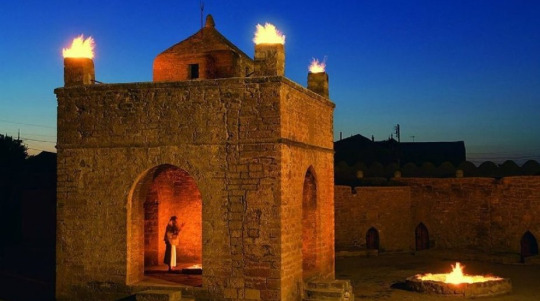
Confession: I have a Master's in Roman history, so a lot of the structural/theoretical elements of the worldbuilding come from Rome. The complicity of citizens and the economy of empire come from Rosenstein's Rome at War; Padilla Peralta's "Epistemicide: The Roman case" has a fantastic exposition on the murder of knowledge under Roman imperialism; ideas about maritime connectivity come from Horden and Purcell's Corrupting Sea, which lives rentfree in my brain.
The Southern Water Tribe
The Southern Water Tribe is modelled on Inuit culture, as in the show. Quviasukvik is the name of the Inuit New Year festival. The celebration of the end of winter and reappearance of the sun seemed to be the key element. As such, I imagined that the festival was shared by both Northern and Southern Water Tribes, though the South would celebrate it after their winter (mid-year).
I also infused knowledge systems of the First Nations of so-called "Australia" into SWT culture. This is kinda my nod to the specifically Southern aspect of this culture; I want to acknowledge too what I have learnt about coloniality from the custodians of the stolen land where I wrote this fic. The throwing technique of the returning boomerang (in actuality not used as a weapon by Aboriginal people) is from Muruppi, a Djirrbal and Ngadjonji man. The references to Indigenous agri/aquaculture in Sokka's thesis are inspired by Bruce Pascoe's Dark Emu, which questions the myth that Aboriginal people living before European colonialism were exclusively hunter-gatherers. Sokka alludes to prewar maritime contact between the Southern Water Tribe and the south coast of the Earth Kingdom, which is a nod to the precolonial contact between Aboriginal nations of the Kimberley and Indonesian merchants. He also makes reference to the oral histories, "yarning", that comprised his education; however, yarning is rejected as a "legitimate" episteme by the university.
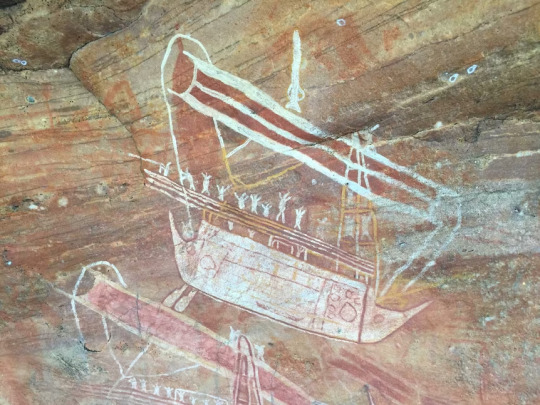
The Earth Kingdom
We largely encounter the Earth Kingdom through Ba Sing Se in this fic, but on the whole I imagine it to be based more on East Asia, as again we see reflected in the show. Ba Sing Se's aesthetics are based on the Qing dynasty and northeastern China, and the detail I added was to have all the names in pinyin.
There is a fleeting mention of Toph serving a "typical Gaoling meal of steamed dumplings and rice paper rolls". This food comes from Cantonese cuisine and hints at the cultural difference between Ba Sing Se and other regions of the Earth Kingdom.

On the approach to Ba Sing Se, there is an extended discussion about roads because a) why not, and b) I am a Roads NerdTM. The royal roads reference Qin Shi Huang's construction of roads radiating from his capital to consolidate his recently quelled empire. The straight road references the Zhidao (pictured below, lit. straight road), which used significant earthworks to make a relatively straight and flat route that was optimised for vehicular transport.
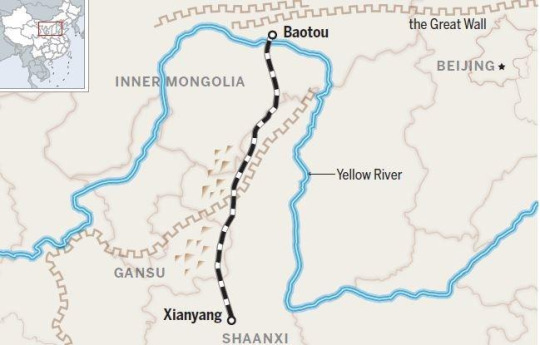
The former colonies
Yu Dao and Cranefish Town are modelled on Hong Kong and Singapore respectively. I felt that the decolonial solution presented in the comics was too "neat" and I wanted to present a messier situation.
In 1963, Singapore gained independence from the British Empire and joined Malaysia, but was kicked out in 1965 after a series of problems including racial strife. The first Prime Minister, Lee Kuan Yew, was a pivotal figure in the establishment of Singapore as an independent country and his People's Action Party has been in office since the inception of the Republic.
The British handed Hong Kong over to the PRC in 1997. Under the stipulations of the Sino-British Treaty, Hong Kong was to have fifty years of political autonomy. The PRC encroached on the Hong Kong constitution over the 2010s, culminating in the mass protests of 2019. The protests were rife with allegations of police misconduct; Associated Press estimates over 10,000 canisters of tear gas were fired in half a year.
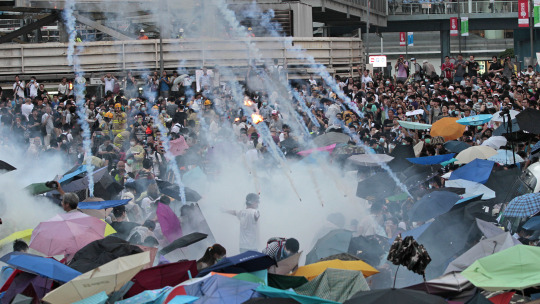
The language of the Earth Kingdom provincial governor echoes statements made by Chinese and Hong Kong pro-Beijing officials alike on the protests. The graffiti on the streets of Yu Dao is directly inspired by graffiti written by HK protesters. Today, many Hong Kong activists remain imprisoned or in exile.
62 notes
·
View notes